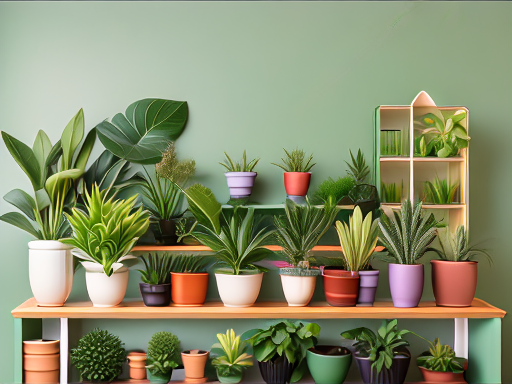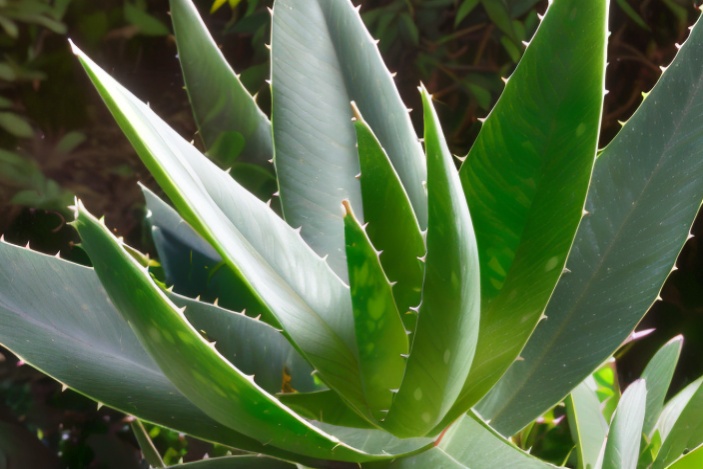Now that many of us are spending more time indoors, it’s the perfect opportunity to make your home work for you. Did you know your indoor air could be housing more harmful pollutants than the air outside? These pollutants, known as volatile organic compounds (VOCs), can come from air fresheners, craft supplies, Healthiest paints, and even household cleaners.

But don’t worry! In today’s video, we’ll show you how to tackle this problem and create a healthier, cleaner space—using plants. Do plants really benefit your health? Can they boost your mood? Do they actually clean the air? We’ll cover all that and more, starting with the best plants to have in your home.
1. Spider Plant
The Spider Plant is a low-maintenance, non-toxic option that thrives in bright, indirect sunlight. Water it a few times a week, and it will reward you with spider or baby plants, that you can propagate and share with friends.
According to a NASA study, spider plants are effective at removing formaldehyde, carbon monoxide, and xylene from the air. Healthiest Plants While the results may vary in real-life settings, it’s still a great choice to keep near your workspace for added air-cleaning benefits.
2. Snake Plant
Also known as “Mother-in-Law’s Tongue,” the Snake Plant is another hardy option that thrives on neglect. It requires minimal watering and tolerates a range of light levels. This plant not only looks great but is also said to remove toxins like formaldehyde, benzene, and trichloroethylene while releasing oxygen.
3. Chrysanthemums (Mums)
Want to brighten up your living space? They’re known for purifying air by removing toxins like ammonia and benzene—but only when the flowers are in bloom, which lasts about six weeks. Keep them damp and in sunlight, but remember they’re toxic to pets.
4. Focus (Weeping Fig)
This elegant plant is one of the top performers in NASA’s Clean Air Study, removing toxins such as formaldehyde, xylene, and toluene from the air. It’s easy to care for—just avoid direct sunlight, drafts, and overwatering.
5. Dracaenas
With over 40 varieties, Dracaenas add a unique touch to any home. They’re credited with removing harmful chemicals like trichloroethylene, often found in paint removers and adhesives. Healthiest Plants These plants need moderate sunlight and can grow quite tall, so make sure you have the space.
6. English Ivy
It’s also great for absorbing salon product fumes, making it ideal for DIY hair enthusiasts. It requires daily watering and a few hours of direct sunlight, but it’s toxic to pets, so place it out of reach.
7. Peace Lily
This stunning plant boasts beautiful white flowers and high transpiration rates, meaning it can add moisture back into the air and reduce dust by up to 20%. Healthiest Plants It requires a bit more care, including morning sunlight, damp soil, and misted leaves. Be cautious, though—it’s toxic to pets.
8. Aloe Vera

Aloe Vera is not only easy to care for but also incredibly useful. Its gel can soothe burns, wounds, and skin irritations like eczema. Place it in full sunlight, and it will help remove toxins like formaldehyde and benzene from your home. However, it’s toxic to pets, so keep it safely out of their reach.
Health Benefits of Houseplants
Cleaner Air
Houseplants can help reduce harmful toxins in the air, turning them into less harmful byproducts. Some studies suggest plants can even remove up to 10% of carbon dioxide in your home.
Mood Boosters
Plants can make you feel calmer and happier. Studies show that touching soft plants or caring for them can foster compassion and empathy. Healthiest Plants, in particular, can improve your mood and memory.
Holistic Therapy
Gardening or simply being around plants has therapeutic benefits. Healthiest Plants It can help reduce stress, improve mental health, and even aid those suffering from schizophrenia, depression, or dementia.
Bonus Tip: Even a picture of nature can have a calming effect if live plants aren’t an option for you.
